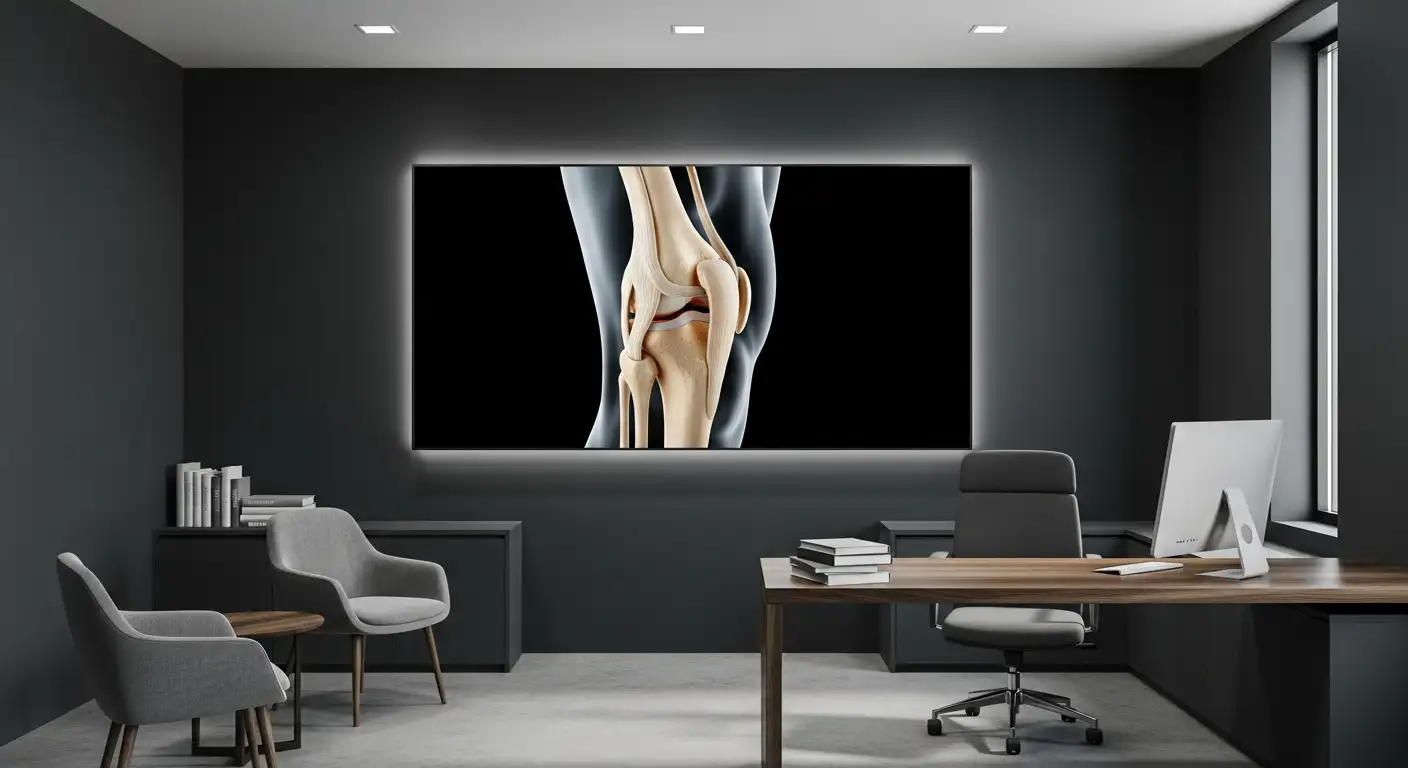Introduction to Knee Pain
Knee pain is a common ailment that can significantly impact a person's quality of life. Whether it's a slight discomfort or severe pain, it can limit one's ability to move freely, engage in physical activities, or perform daily tasks. Understanding the causes of knee pain is the first step towards finding effective knee pain treatment exercises.
Common Causes of Knee Pain
Numerous factors can contribute to knee pain. These include injuries such as ligament tears, mechanical problems like a dislocated kneecap, conditions such as arthritis, and lifestyle factors such as obesity. Each of these causes can lead to different types of knee pain and may require different treatment approaches.
- Injuries: Damage to any part of the knee, such as the ligaments, tendons, or cartilage, can result in pain. Common knee injuries include ACL injury, fractures, knee bursitis, and patellar tendinitis.
- Mechanical Problems: These include issues like a dislocated kneecap or piece of broken cartilage. Conditions such as Iliotibial band syndrome, where the tough band of tissue that extends from the outer hip to the outer knee becomes tight and rubs against the knee, can also cause knee pain.
- Arthritis: There are over 100 different types of arthritis, many of which can cause knee pain. These include osteoarthritis, rheumatoid arthritis, and gout.
- Obesity: Excess weight puts additional stress on the knee joints, resulting in increased pain and stiffness. Maintaining a healthy weight through diet and exercise is essential for managing knee pain, and losing weight can help reduce pressure on the knees and improve overall joint health [1].
Understanding Knee Anatomy
The knee is one of the largest and most complex joints in the body. It is made up of four primary components: bones, ligaments, tendons, and cartilage. These components work together to allow the knee to perform its essential functions, such as bending, straightening, and bearing weight.

- Bones: The knee joint involves three bones - the femur (thigh bone), the tibia (shin bone), and the patella (kneecap).
- Ligaments: These are tough, flexible tissues that hold the bones together. The knee has four main ligaments - the anterior cruciate ligament (ACL), posterior cruciate ligament (PCL), medial collateral ligament (MCL), and lateral collateral ligament (LCL).
- Tendons: These are fibrous tissues that connect muscle to bone. The two main tendons in the knee are the quadriceps tendon (connecting the quadriceps muscle to the patella) and the patellar tendon (connecting the patella to the tibia).
- Cartilage: This is a smooth tissue that covers the surface of the bones at the knee joint and helps reduce friction and absorb shock during movement.
Understanding the anatomy of the knee can help pinpoint the source of knee pain and identify the most suitable knee pain treatment exercises.
Importance of Exercise for Knee Pain
The role of exercise in managing and treating knee pain can be significant. It can be an effective component of a holistic knee pain treatment plan, which may also include dietary changes, physical therapy, and possibly medications.
How Exercise Helps Knee Pain
Exercise can help with knee pain by strengthening the muscles that support the knee. This can lead to improved function and reduced pain. The stronger the muscles around the knee, the more they can absorb the force exerted on the joint, reducing the strain on the knee itself. Regular exercise also helps maintain mobility in the knee, which can prevent stiffness and further pain.
Specific strengthening exercises, such as straight leg raises and knee curls, should be done two to three times a week to help manage knee pain. These exercises can be particularly beneficial for those with osteoarthritis, providing relief and improving overall knee function [2].
Research on Exercise and Knee Pain
Numerous studies support the use of exercise as a knee pain treatment. A study published in the British Journal of Sports Medicine found that exercise therapy can be just as effective as surgery for relieving knee pain, indicating the power of regular, targeted exercise in managing this common ailment.
Another significant study conducted over two years showed that a home-based exercise program could significantly reduce knee pain in patients with knee osteoarthritis. This study also demonstrated that the reduction in pain was greater the closer patients adhered to the exercise plan, underlining the importance of consistency in exercise routines for knee pain management [4].
In conclusion, the importance of exercise for knee pain treatment cannot be overstated. Regular, targeted exercises can strengthen the muscles around the knee, improve joint function, and significantly reduce pain levels. It's crucial to adhere to the exercise regimen consistently for the best results. Always consult a healthcare professional before starting an exercise program, and remember that it's okay to start small and gradually increase the intensity as your strength and stamina improve.
Types of Exercises for Knee Pain
One of the most effective ways to tackle knee pain is through exercises that strengthen and stretch the muscles supporting the knee, improve flexibility, and boost balance and stability. Here are some knee pain treatment exercises that can be beneficial.

Strengthening Exercises
Strengthening exercises play a crucial role in managing knee pain. They help stabilize the knee joint, reduce pressure, and improve the function of the knee, especially for those with arthritis. Some effective strengthening exercises include leg lifts, hamstring curls, calf raises, and wall squats. Additionally, hip and thigh exercises, such as hip abductions and adductions, can enhance knee stability and reduce pain by fortifying the muscles that support the knees.
Flexibility Exercises
Flexibility exercises, such as stretching the quadriceps, hamstring, and calf muscles, can improve the range of motion of the knee joint and alleviate stiffness and discomfort. These range-of-motion and stretching exercises help maintain flexibility in the knee joint, which is crucial for its normal function [1].
Balance and Stability Exercises
Balance and stability exercises, like single-leg stands and step-ups, can enhance proprioception, coordination, and control of movement. These factors are vital for preventing knee injuries and managing knee pain [5].
Low-impact Aerobic Exercises
Aerobic exercise can benefit the knee joint by improving blood flow, controlling weight, and enhancing overall well-being. Low-impact activities like walking, biking, and swimming are usually recommended for people with knee pain. These activities can help reduce inflammation and strengthen the muscles around the knee joint.
Incorporating these types of exercises into your routine can significantly improve knee health. However, they should be performed with the correct form and technique to avoid injury and maximize benefits. Always consult a healthcare provider or physical therapist before starting a new exercise regimen to ensure it's suitable and safe for your specific condition.
Detailed Exercise Guide
To help alleviate knee pain and improve overall knee health, a consistent regimen of well-selected exercises can be highly beneficial. The following guide provides step-by-step instructions for strengthening, flexibility, and balance and stability exercises, all aimed at mitigating knee discomfort.
Step-by-step Strengthening Exercises
Strengthening exercises can help stabilize the knee joint and reduce pain by building the muscles around the knee. Here are some specific exercises that may help.
Straight-Leg Lift Exercise:
- Lie on your back with one leg bent upwards and the other extended straight out.
- Slowly raise the extended leg to a forty-five-degree angle.
- Hold for five seconds.
- Lower the leg back to the ground.
- Repeat this exercise twenty times for each leg.
Leg ADduction Exercise:
- Stand upright and hold onto the backrest of a chair for balance.
- Raise a straightened leg sideways against the bottom of the chair.
- Hold for ten seconds.
- Return the leg to the floor.
- Repeat this exercise ten times for each leg.
Regularly performing these strengthening exercises can provide significant relief from knee pain.
Step-by-step Flexibility Exercises
Flexibility exercises are crucial for maintaining a full range of motion in the knee joint. They can help alleviate stiffness and increase mobility, which in turn can reduce discomfort and pain.
Knee Flexion Stretch:
- Sit on the floor with your legs stretched out in front of you.
- Bend one knee and slide your heel towards your buttocks.
- Hold the stretch for thirty seconds.
- Return to the starting position and repeat with the other leg.
Quadriceps Stretch:
- Stand upright and hold onto a support if needed for balance.
- Bend one knee, bringing your heel towards your buttocks.
- Hold onto your ankle and gently pull it closer to your buttocks.
- Hold the stretch for thirty seconds.
- Release and repeat with the other leg.
Remember that when performing flexibility exercises, you should never push to the point of pain. A gentle stretch is sufficient.
Step-by-step Balance and Stability Exercises
Balance and stability exercises can help improve your body's proprioception (awareness of movement and spatial orientation), which can improve knee stability and reduce pain.
Single-Leg Stand:
- Stand upright with your feet hip-width apart.
- Shift your weight onto one leg and slowly lift the other leg off the ground.
- Hold the position for as long as you can, aiming for thirty seconds.
- Lower your leg and repeat with the other leg.
Heel-to-Toe Walk:
- Stand upright with your arms extended to your sides for balance.
- Walk in a straight line, placing your heel directly in front of the toes of your other foot each time you step.
- Take twenty steps, turn around, and repeat.
These exercises can help you build strength, flexibility, and stability in your knees, all of which are integral parts of effective knee pain treatment exercises. Remember to always perform these exercises in a controlled, steady manner, and stop if you feel any pain.
Safety Measures for Knee Exercises
When dealing with knee pain, it's crucial to exercise with caution. Certain activities can exacerbate knee pain and lead to further injuries, so it's important to know which exercises to avoid and the importance of using correct form and technique during exercise.
Exercises to Avoid with Knee Pain
Though exercise is an essential part of knee pain treatment, not all exercises are beneficial for those experiencing knee discomfort. Some activities can actually worsen knee pain, especially if they're performed incorrectly or if an individual has a chronic knee condition like osteoarthritis. Below are a few examples of exercises that should be avoided by individuals with knee pain:
- Lunges: Often used to strengthen muscles, lunges can exacerbate knee pain if done incorrectly. They can be particularly harmful for individuals with chronic knee conditions or recent knee replacements [9].
- High-Intensity Interval Training (HIIT): Lower body-centric movements like sprinting and explosive jumping can lead to knee injuries and are best avoided by individuals with knee problems.
- Improper Stair Climbing: Climbing stairs with improper form can strain the knees, potentially causing injury. Individuals experiencing knee pain should be cautious when climbing stairs and focus on engaging their entire body to minimize knee strain.
If knee pain is experienced during an exercise, it's advisable to stop or slow down as pushing through the pain can worsen the condition. It is also recommended to consult with a doctor before starting a new exercise routine and to consider non-weight-bearing exercises like cycling, cross-training, or swimming as they may be beneficial for individuals with knee pain.
Importance of Correct Form and Technique
Maintaining correct form and technique during exercise is critical for managing knee pain. Incorrect or sloppy form can put undue strain on the knee joint, leading to increased pain and potential injury. Therefore, it's essential to learn and consistently apply proper form during all exercises, especially those targeting the knee.
Performing strengthening exercises, such as straight leg raises and knee curls, two to three times a week can help manage knee pain. These exercises can be particularly beneficial for those with osteoarthritis [2].
Incorporating flexibility exercises like knee bends and hamstring stretches can enhance flexibility and reduce stiffness in the knee joint. Moreover, low-impact aerobic exercises like walking, swimming, or cycling are recommended. These activities can help improve cardiovascular fitness and maintain a healthy weight, thereby alleviating strain on the knees.
Balance exercises that strengthen the muscles around the knee can help improve stability and reduce the risk of falls, especially in older individuals with knee pain.
Before starting any new exercise program for knee pain, consult with a healthcare professional or physical therapist. This ensures the chosen knee pain treatment exercises are safe and appropriate for the individual's needs and conditions.
Additional Tips for Managing Knee Pain
While knee pain treatment exercises play a fundamental role in managing and relieving knee pain, other factors such as diet, weight management, and various therapies can also significantly impact the overall health of your knees.
Role of Diet and Weight Management
Maintaining a healthy weight is essential for managing knee pain. Excess weight can put additional stress on the knee joint, leading to increased pain and stiffness. Incorporating a balanced diet and regular exercise can assist in weight management, reducing pressure on the knees and improving overall joint health [1].
It's also important to include foods with anti-inflammatory properties in your diet. Fruits, vegetables, lean meats, and fish rich in omega-3 fatty acids can help ease inflammation and potentially reduce knee pain.
Benefits of Heat and Cold Therapy
Heat and cold therapy can be an effective adjunct to your knee pain treatment exercises. Applying a warm compress to the knee can help relax muscles and promote blood flow, which can be particularly beneficial before starting your exercise routine.
On the other hand, cold therapy can help reduce inflammation and swelling after exercise. A cold pack or a bag of frozen vegetables wrapped in a towel can be applied to the knee for 15-20 minutes to help alleviate pain and inflammation. Always remember to have a layer between the ice and your skin to avoid frostbite.
The Importance of Regular Exercise
Regularly performing exercises to strengthen the muscles around the knee joint can help alleviate knee pain and improve overall knee health.
Aerobic exercise can also benefit the knee joint by improving blood flow, controlling weight, and improving overall well-being. Low-impact activities like walking, biking, and swimming are usually recommended for people with knee pain. These activities can help reduce inflammation and strengthen the muscles around the knee joint.
Moreover, a study showed that reductions in knee pain are greater for patients who closely adhere to exercise programmes [4].
While regular exercise is crucial, it's equally important to listen to your body and not overdo it. Overexertion can lead to further pain and injury. Always remember to start slow, gradually increase your activity level, and rest when needed.
In conclusion, a combination of a balanced diet, weight management, heat and cold therapy, and regular exercise can significantly improve the effectiveness of knee pain treatment exercises. Always remember to consult with a healthcare professional before starting any new exercise or treatment regimen.
References
[1]: https://www.mayoclinic.org/diseases-conditions/arthritis/in-depth/arthritis/art-20047971
[3]: https://www.medicalnewstoday.com/articles/325804
[4]: https://www.ncbi.nlm.nih.gov/pmc/articles/PMC128377/
[5]: https://www.healthline.com/health/exercises-for-knee-pain
[6]: https://www.webmd.com/fitness-exercise/top-exercises-knee-pain
[8]: https://thcboneandjoint.com/educational-resources/knee-exercises.html
[9]: https://ethoshealthgroup.com/what-exercises-to-avoid-with-knee-pain/





